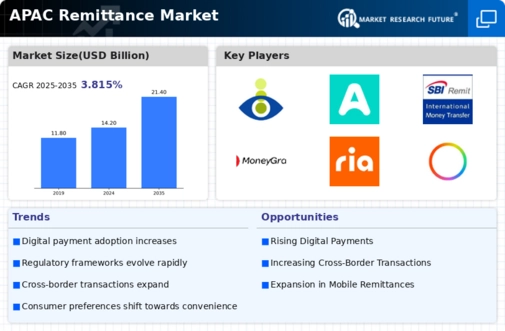The APAC Remittance Market is a dynamic and evolving sector characterized by the interplay of numerous players offering diverse services catering to the financial needs of expatriates and migrant workers. The region’s economic diversity, combined with high volumes of cross-border transactions, presents a fertile ground for competition among both traditional banking institutions and fintech companies. As the demand for fast, affordable, and secure remittance services continues to grow, companies are challenged to differentiate their services and build brand loyalty in a highly fragmented market.
The competitive landscape is marked by innovation in technology, partnerships, and a keen focus on enhancing customer experiences, which together drive the market's evolution.Revolut has established a notable presence within the APAC Remittance Market, leveraging its advanced technology and digital banking model to offer competitive remittance services. The company emphasizes transparency and cost-effectiveness, providing users with access to favorable exchange rates and low transaction fees, which resonates well with cost-conscious consumers. By facilitating easy peer-to-peer transfers and international money transfers, Revolut has captured the attention of tech-savvy individuals seeking seamless cross-border transactions.
Furthermore, its user-friendly mobile application enhances the customer experience, making financial transactions more accessible. The company's strengths lie in its ability to integrate various financial services under one platform, allowing it to cater to a wide array of financial needs while simultaneously expanding its market share in the remittance segment across the APAC region.Azimo operates within the APAC Remittance Market by providing an innovative digital platform that simplifies the sending of money across borders. Known for offering low-cost transfer options, Azimo has effectively positioned itself as an affordable alternative to traditional remittance services.
The company allows users to send money directly to bank accounts, mobile wallets, or cash pick-up, catering to the diverse needs of recipients in different countries throughout the APAC region. Azimo's strengths lie in its partnerships with local payment providers, which enhance its capabilities for faster and more efficient transfers. Additionally, the firm has strategically pursued mergers and acquisitions to expand its service offerings and geographical reach within APAC, continuously working to improve its platform and customer service. By focusing on user experience and competitive pricing, Azimo remains committed to standing out in the ever-evolving remittance landscape.





















